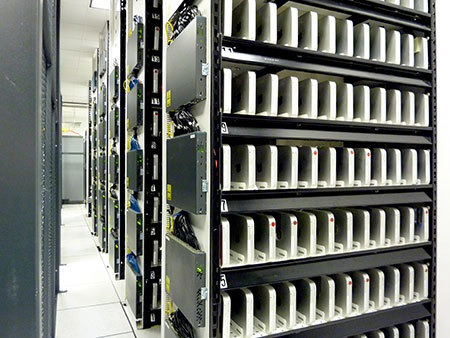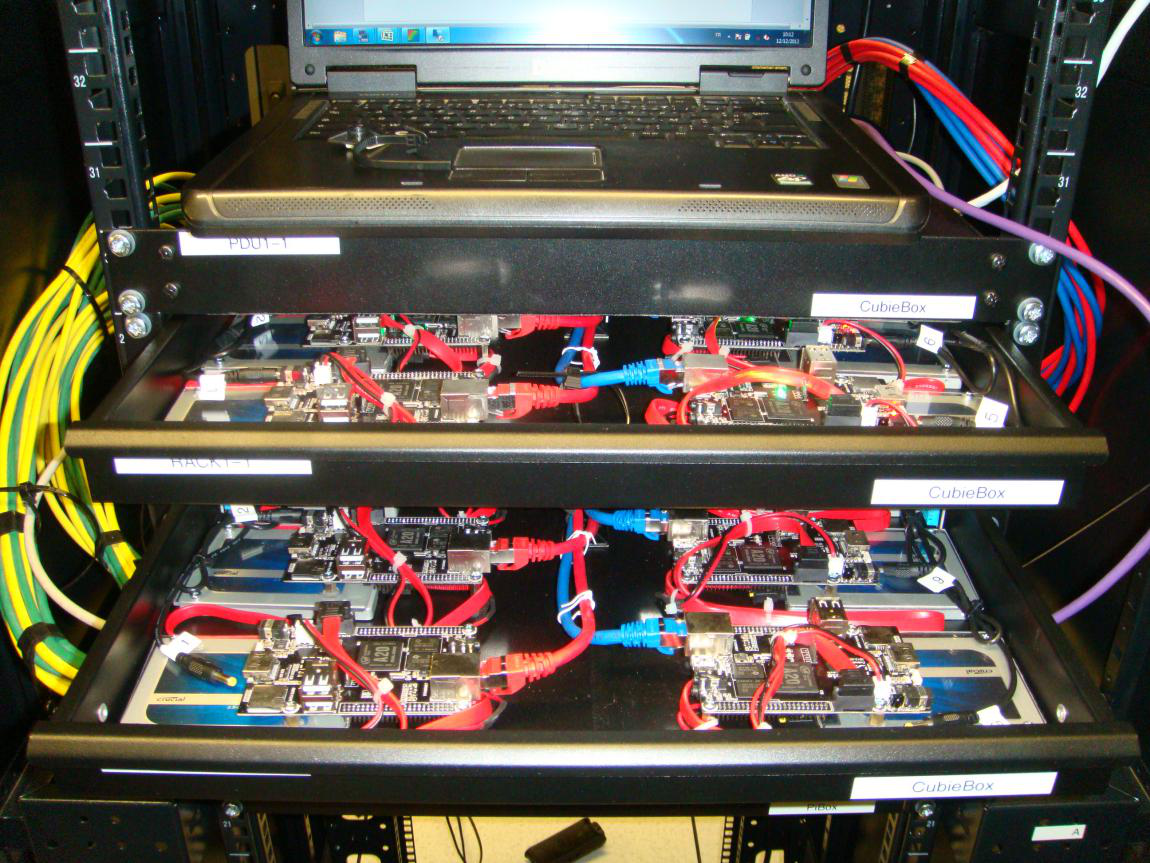Colocation, ordinary and not very
Recently, I had a desire for curiosity to place my CubieTruck in a data center to check how it would behave under combat load. And ... nothing came of me, because The data center I contacted is not yet ready to place such non-standard equipment. It was then that it dawned on me to make a very brief essay on what people might want to place on colocation.

Yes, in the Mac Mini photos located in the server rack. But more on that later.
In the first place in terms of placement frequency (after the classic rack servers, which I will not touch on in this article at all) are desktops. And although the colocation zone of desktop configurations is rather elegant in some kind of garage or warehouse, this service is quite in demand.

Naturally, demand creates supply. Many small and medium-sized data centers will take your regular computer to your colocation without any problems. From the photographs, I observed two implementations: a warehouse (as in the photo above) and rack, when a special 19 "pallet is placed in the rack, which the system engineers put on. Below and above this pallet ordinary rack servers can be placed. The second implementation allows better heat dissipation and extinguish the fire in case of something. And the warehouse option burns very well... By the way, some companies (we will not point fingers) that provide dedicated economy-class servers also deploy their servers on a warehouse basis.
Placing the Mac Mini in the data center has not yet gained popularity (in any case, I have not heard about it). But in the US there are entire companies that specialize in such a placement. As with desktops, there are two placement options. You’ve already seen the placement in the 19 ”rack. And this is how the rack looks:

I think the army of apple growers chokes on saliva after this photo. For those who haven’t choked, the control shot.

Either people working with the Mac have a sense of aesthetics, or just Macseals are doing better, but looking nicer than a desktop rack, Some companies that provide this service have even developed special racks to fit the size of the device.
Yes, I myself wonder how it looks. I did not find any pictures, but on the forums I met questions where you can put a laptop on a stake, as well as reviews of people who have already done this. In particular, one person mentioned that his provider was very fond of his energy consumption. But the demand is actually small, so do not go into details.
Perhaps the newest and most unpopular variety is the placement of mini-computers (including those based on the ARM architecture). Mainly ARM is used for mobile phones and tablets. But the production of mini-computers such as CubieBoard is actively gaining momentum . And if Cubieboard 1 and 2 could be used mainly in DIY projects, the 3rd version in terms of performance is quite up to a small VPS.
A young French startup NanoXion, specializing in various solutions for hosting and equipment placement, recently began to host CubieTruck (3rd version of CubieBoard) on its site. Even designed the chassis for rack mounting:

Actually, this is not quite colocation, you do not need to send your Cubie to the French. It is more likely to rent a dedicated microserver. However, those who want to place their Cubie on a stake may very soon catch up (I, for example). So far, this technology is only developing, but the developers announced the preparations for the release of a new model based on the 8-core UltraOctaA80 chipset. The SATA interface and Linux assemblies ported for ARM, and a host of other advantages, which I will discuss a little later, allow us to consider this area as quite promising.
I will talk about the field trials of my CubieTruck in a separate article. If someone agrees to take it at stake for a couple of months (preferably within Ukraine, so that it would be easier to forward) for a combat test, I will be immensely happy.

Yes, in the Mac Mini photos located in the server rack. But more on that later.
Desktops
In the first place in terms of placement frequency (after the classic rack servers, which I will not touch on in this article at all) are desktops. And although the colocation zone of desktop configurations is rather elegant in some kind of garage or warehouse, this service is quite in demand.

Naturally, demand creates supply. Many small and medium-sized data centers will take your regular computer to your colocation without any problems. From the photographs, I observed two implementations: a warehouse (as in the photo above) and rack, when a special 19 "pallet is placed in the rack, which the system engineers put on. Below and above this pallet ordinary rack servers can be placed. The second implementation allows better heat dissipation and extinguish the fire in case of something. And the warehouse option burns very well... By the way, some companies (we will not point fingers) that provide dedicated economy-class servers also deploy their servers on a warehouse basis.
Mac mini
Placing the Mac Mini in the data center has not yet gained popularity (in any case, I have not heard about it). But in the US there are entire companies that specialize in such a placement. As with desktops, there are two placement options. You’ve already seen the placement in the 19 ”rack. And this is how the rack looks:

I think the army of apple growers chokes on saliva after this photo. For those who haven’t choked, the control shot.

Either people working with the Mac have a sense of aesthetics, or just Mac
Laptops
Yes, I myself wonder how it looks. I did not find any pictures, but on the forums I met questions where you can put a laptop on a stake, as well as reviews of people who have already done this. In particular, one person mentioned that his provider was very fond of his energy consumption. But the demand is actually small, so do not go into details.
Cubietruck
Perhaps the newest and most unpopular variety is the placement of mini-computers (including those based on the ARM architecture). Mainly ARM is used for mobile phones and tablets. But the production of mini-computers such as CubieBoard is actively gaining momentum . And if Cubieboard 1 and 2 could be used mainly in DIY projects, the 3rd version in terms of performance is quite up to a small VPS.
A young French startup NanoXion, specializing in various solutions for hosting and equipment placement, recently began to host CubieTruck (3rd version of CubieBoard) on its site. Even designed the chassis for rack mounting:

Actually, this is not quite colocation, you do not need to send your Cubie to the French. It is more likely to rent a dedicated microserver. However, those who want to place their Cubie on a stake may very soon catch up (I, for example). So far, this technology is only developing, but the developers announced the preparations for the release of a new model based on the 8-core UltraOctaA80 chipset. The SATA interface and Linux assemblies ported for ARM, and a host of other advantages, which I will discuss a little later, allow us to consider this area as quite promising.
I will talk about the field trials of my CubieTruck in a separate article. If someone agrees to take it at stake for a couple of months (preferably within Ukraine, so that it would be easier to forward) for a combat test, I will be immensely happy.
